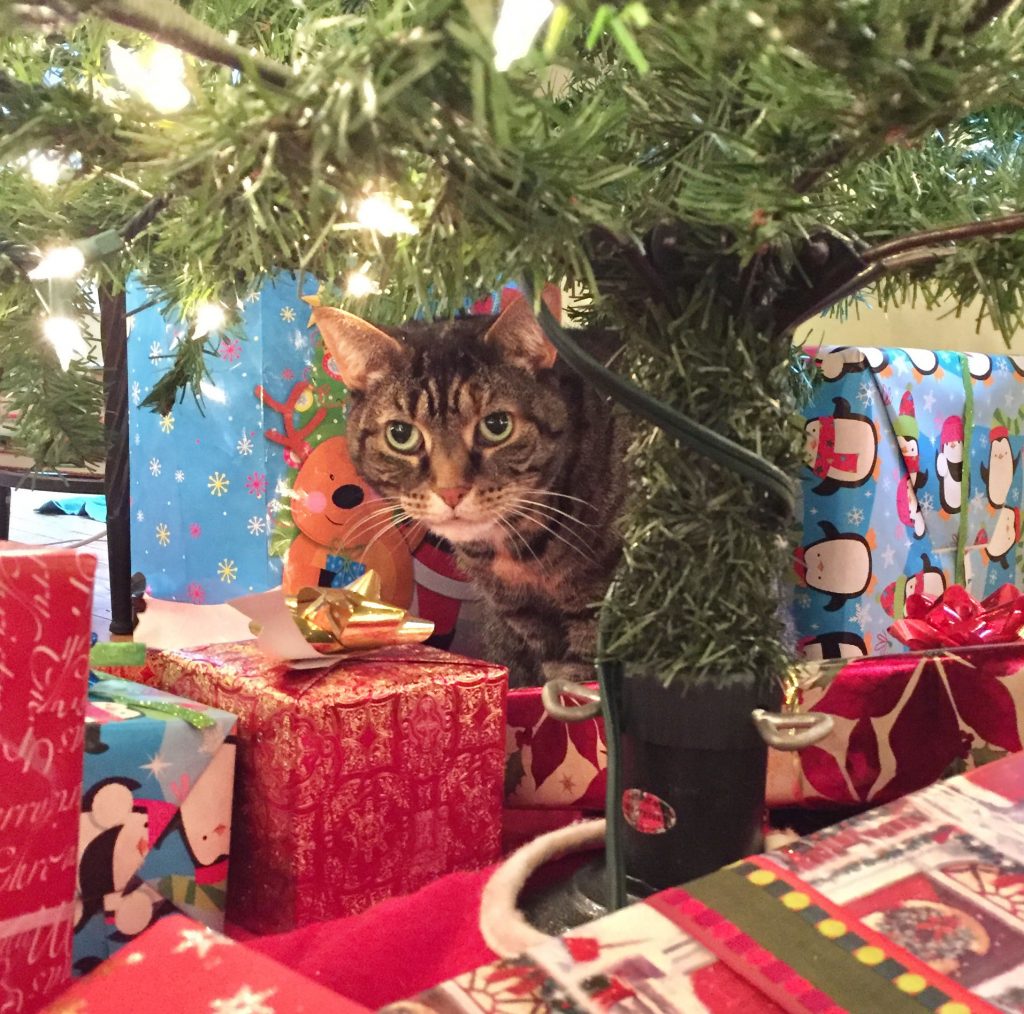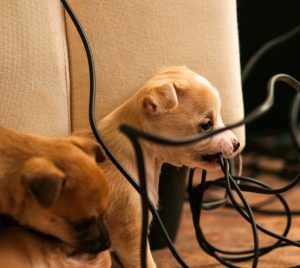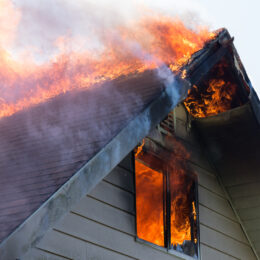
Picture this all too familiar scene:
You walk into the living room after a long day at work and find your dog chewing on something (again). You ask him what he has in his mouth (like he’s going to answer you!). On most days, he’s chewing on your favorite pair of shoes. But this time, he has an electrical cord in his mouth. Being cute and cuddly won’t help him now. He may have put himself in danger of injury or death and created a shock or fire hazard in your home.
Spending a little time “pet-proofing” your home will help you avoid a pet-related accident. If you have a pet, check out these tips to protect your furry friend from electrical hazards:
Small mammals and birds have a habit of gnawing on things, which might include exposed electrical cords. Try to block access to these cords by strategically placing your furniture so pets can’t reach them. Sometimes it’s hard to hide every wire, so you should consider wrapping or encasing them.
Most hardware stores sell flexible safety cables and PVC. Aesthetically speaking, they’re not the best solution, but safety comes first. Electrical shock is not the only issue with wires. If you have multiple cables close to each other, your pet might get tangled up and injured.
Just like kids, pets hate certain foods because of how they taste. You can purchase a pet deterrent spray from a pet shop and coat your electrical cords to discourage chewing. Another great way to deter them is to give your pets toys to play with. Some dog and cat breeds have more energy, so make sure you understand your pet’s needs.
Invest time in training. You can train a dog to stop chewing the couch, you can train a cat to keep off the counters, and you can train your pet to stay away from wires.
If the worst happens, visit a veterinarian immediately. Remember that electrical shocks are life-threatening and should be treated as emergencies. Some symptoms aren’t easy to detect just by looking at your pet.
If you have any other questions about pet electrical safety, reach out to your electric co-op for more advice and information.
What to do if your pet is shocked

If you think your dog has suffered from an electric shock, approach him with caution and care. He is already going to feel stressed and you don’t want to startle your pet. Also, if the wire is still live you don’t want to be exposed to the source.
Take your pet to your veterinarian or pet emergency center as soon as possible to see if treatment is needed.
If your pet becomes tangled in cords, again, try to keep him calm. You may need help from another person to gently remove the cords and keep your pet still.



